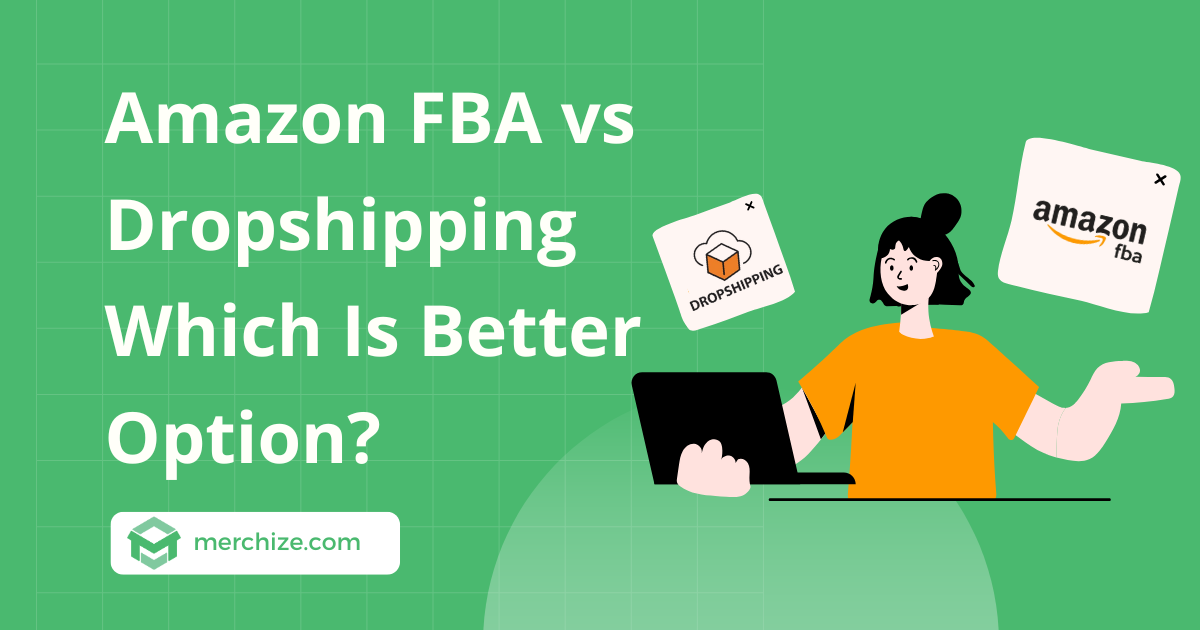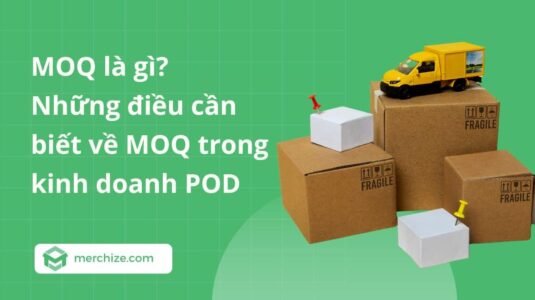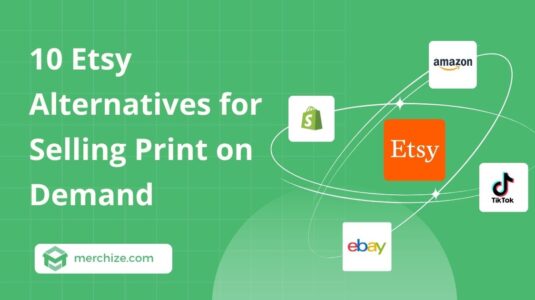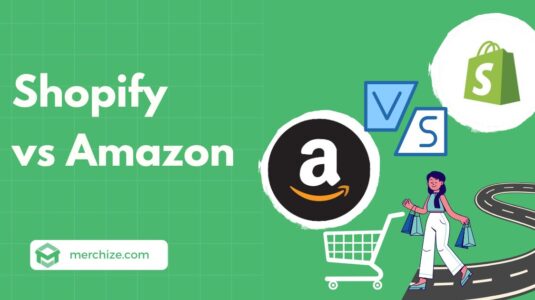Amazon allows sellers to either handle the storage and delivery themselves (FBM) or use Amazon’s fulfillment service (FBA). If you are selling dropshipping on Amazon, you can only choose FBM. It means that sellers only have two choices: do dropshipping with a third-party supplier or join hands with Amazon and let them help you with inventory management and shipping.
To make it simple for you to understand, here’s a simple explanation of the differences between FBA and dropshipping:
- Inventory: Amazon FBA requires you to buy and own inventory upfront before handing it to Amazon while with dropshipping, sellers only pay after a sale is made.
- Fulfillment: With Amazon, you ship your products to Amazon warehouse and they will then handle storage and shipping for you when an order comes. With drop shipping, you can rely on your suppliers to ship products directly from their own inventory to your customers.
These are the two fundamental differences between the two models. Let’s explore at length how each model works, what are the differences, and which one is the better option.
How Amazon FBA works
Imagine you’re selling products on Amazon. You’ve got a pile of items ready to ship, but packing and mailing every order? That’s time-consuming. And let’s be honest, storage space? Not everyone has it.
Here’s where FBA steps in. Amazon FBA, or Fulfillment by Amazon, is a way for sellers to hand over logistics to Amazon.
With FBA, you ship all your products directly to Amazon’s warehouses. From there, Amazon takes over. They’ll store, pack, and deliver your orders straight to customers—fast. Besides, FBA also allows Prime customers to enjoy the two-day delivery, sometimes even faster.
This model allows you to focus on the more important stuff—sourcing, marketing, and growing your brand. Amazon handles the heavy lifting, even the customer service. Returns? Amazon’s also got it covered.
But remember, FBA comes at a price that might add up to your total cost. So, it’s worth asking, “Is it right for my business?
How dropshipping works
With dropshipping, you won’t ever have to touch the products. Instead of stacking up items in your garage or sending them to a warehouse, like with Amazon FBA, you neither own products nor keep any inventory at all.
When a customer orders, you simply forward the order to your supplier. The supplier then packs and ships the product from their own inventory directly to the customer.
As a seller, you never see the product; you just handle the sale and pass the baton. It’s simple and easy. No bulk buying, no storage fees, and no Amazon fulfillment charges.
The major appeal of dropshipping is the low entry barrier and easy operation. However, it relies heavily on partnerships. In other words, you depend on your supplier to provide quality products and enjoyable buying experiences to your customers. What happens if they mess up an order? Or if the product quality isn’t up to par? The blame falls on you, not them. So, dropshipping can be a tightrope walk.
Amazon FBA vs Dropshipping key differences
Fulfillment and Shipping
With Amazon FBA, sellers send products to Amazon’s warehouses. Once a customer orders, Amazon picks, packs, and ships the product.
In dropshipping, when a customer orders, you send order details to your suppliers, who then ship products from their inventory to the buyer.
Compared to Amazon FBA, there is an extra step from when the order is made to when the order is shipped. This can mean extended delivery times. Not to mention that in most cases, dropshipping suppliers are located overseas. It might take days or even weeks for your orders to arrive.
On the other hand, Amazon, which is well-known for its super-fast delivery, can send packages to customers’ doors the same day or two days. With its massive, logistic machine, Amazon is efficient and reliable when it comes to shipping.
Dropshipping is simpler and cheaper upfront but lacks the speed and predictability Amazon FBA can guarantee. Dropshipping’s hands-off approach works but at a cost that is slow and inconsistent delivery time.
Inventory management
With FBA, you still have to purchase the products and hold inventory first, before handing them to Amazon. Think of Amazon FBA as a renting service that allows you to rent Amazon’s storage space. The products are still yours, and if items don’t sell quickly, you’re hit with long-term storage fees. For example, if you’re selling winter scarves, you want them flying off shelves by December, not lingering into April, racking up fees.
In the case of dropshipping, you don’t buy products until they’re sold. If a customer orders, you order from the supplier, who then sends it out. No stock sitting, no warehouse fees, and no risk of unsold inventory. Say you’re offering a variety of quirky mugs; you can list dozens without ever owning a single one.
But here’s the rub: you’re dependent on suppliers’ stock. If they’re out, you’re out. You avoid upfront risk but lose control over stock availability. It’s inventory “just-in-time,” but it can lead to stockouts if your supplier can’t keep up.
Control over Branding
With Amazon FBA, Amazon takes the reins on packaging. When orders come, items will be picked out from the inventory and packed as per Amazon’s standards. Orders arrive in Amazon-branded boxes, often with no hint of the seller’s brand. The customer gets their item fast, but the experience is more “generic Amazon.”
Let’s say you’re selling hand-made candles and want the packaging to match that personal, handmade feel. With FBA, you can’t add those personal touches.
Of course, you can still prepare your own packaging before sending your products to Amazon’s warehouse. However, it will cost you double the price for packaging and increase the shipping cost due to added weight. You might have to sacrifice brand personality in favor of efficiency.
Dropshipping, though, can sometimes give more leeway. Many suppliers offer “white-label” options where they’ll ship in unbranded packaging, and some might even accommodate custom packaging requests.
For example, you’re dropshipping organic skincare products; you could work with suppliers to ship them in eco-friendly, branded packaging that reflects your brand’s values. But again, it depends on the supplier.
Still, some dropshipping suppliers may offer no customization options, which leaves you with limited control here as well—though generally more than with Amazon FBA.
Customer Services and Returns
Amazon FBA’s big draw? Amazon handles customer service and returns. They have dedicated staff to respond to inquiries, manage refunds, and take care of returns. For example, if a buyer needs a refund on a damaged item, Amazon deals with it directly, saving you time and energy. This is a huge weight off sellers’ shoulders, especially with a high sales volume. You can trust Amazon’s reputation when it comes to handling customer care. They are the professionals.
Dropshipping, on the other hand, puts customer service firmly on your plate. You’re the middleman, and if something goes awry—like delayed shipping or a damaged product—you’re the one the customer calls. Let’s say a customer’s clothing order arrives three weeks late; you’ll have to explain the delay, manage their frustration, and maybe even offer compensation.
Returns can be even trickier. If the item needs to go back to an overseas supplier, the cost and hassle increase.
Dropshipping gives you flexibility but requires strong customer service skills and patience to handle these challenges head-on. On the other hand, Amazon can take the weight off the seller’s shoulders and take care of customer complaints and returns.
Cost and Fee
Upfront cost
Amazon FBA requires a huge upfront investment. Before you even make a sale, you have to buy inventory. Let’s say you’re selling headphones—you’ll need to bulk purchase stock, sometimes hundreds of units, and then ship all of it to Amazon’s warehouse.
That initial spend can range from a few thousand to tens of thousands of dollars, depending on your product choice and sales volume.
Dropshipping, by contrast, lets you dodge this financial hurdle. No upfront inventory investment means you only pay for items once a customer orders them. This makes it easier for sellers to sell more products and try trendy items.
For example, a seller can list dozens of micro-trend items without spending a dime on stock. So when these short-lived trends die, you won’t have to worry about losing money on unsolved stocks.
Other costs
Amazon FBA is a service that comes at a price. Here’s a simple cost breakdown of Amazon FBA:
- Fulfillment fees: Charged per unit sold, covering picking, packing, and shipping services, as well as customer service and returns. This fee varies by item size and weight. (for example, around $2.5-$3.5 for small items, $4.75 to $9.00 for larger items).
- Storage fees: Charged monthly, based on the cubic footage of your stored inventory; covering the cost of warehousing. (Standard storage fee is $0.87 per cubic foot from January to September and $2.40 per cubic foot from October through December; Long-term storage fee is $6.90 per cubic foot or a minimum $0.15 per unit, whichever is greater)
- Referral fees: Charged as a percentage of each sale, varies by product category (around 8% to 15%).
- Returns Processing Fee: Applied to some product categories for returned items only.
Amazon’s fulfillment fee may take a chunk of your profit on each unit sold. So, as sales rise, so do these cumulative fees—Amazon’s logistics, while smooth, is far from free.
In dropshipping, the main recurring cost includes shipping free, referral fees if you are on Amazon and other associated fees for listing products or running online stores if you are selling on other channels.
In addition, dropshippers also tend to spend big bucks on advertising to attract customers. And the hidden cost of dropshipping for handing returns is generally higher than with Amazon FBA where you have more control over the product quality.
Generally, the cost structure of dropshipping model is simpler than Amazon FBA. Dropshipping is much cheaper to start as there’s no upfront inventory cost but less predictable, whereas FBA requires higher costs for inventory purchases and fulfillment costs but offers higher reliability.
Profit Margin
In most cases, Amazon FBA tends to offer higher profit margins than dropshipping. Why? It all comes down to scale and control.
With FBA, sellers buy products in bulk at wholesale prices, which often slashes the cost per item. Of course, Amazon FBA charges fulfillment and storage fees, but they’re often more predictable. For example, each unit shipped through FBA might incur a $3.50 fulfillment fee plus a monthly storage fee. While these charges chip away at profits, they are predictable, enabling FBA sellers to price their products strategically.
In contrast, dropshipping bypasses storage and fulfillment fees but comes with hidden shipping and handling costs, especially if suppliers are overseas. Shipping alone could cost $5 or more per order—eating into profits significantly. Also, lower control over product quality and delivery time can lead to higher customer dissatisfaction and higher returns/refund rates.
Besides, the market for dropshipping is becoming increasingly competitive, which leaves the dropshipper no choice but to price their products competitively.
Consider the difference in a real-world scenario. An FBA seller might make $10 in profit after fees on a $20 item, thanks to lower product costs and fixed fees. A dropshipper selling the same item might only see $4 to $5 in profit due to higher supplier and shipping costs. This difference impacts scalability and makes FBA potentially more profitable over the long run.
Customer Trust
FBA has a built-in trust advantage. When selling via FBA, your product listing will come with the Prime badge. Customers trust Amazon’s name, quick delivery, and return policies.
When a shopper decides between two identical products—one with Prime, one without. What would they choose? Of course, it’s the one with Prime benefits. When they see the Prime badge, they know they’re buying from a trusted source. This trust can boost sales significantly.
Dropshipping, on the other hand, is a tougher sell in the trust department. Customers are less likely to buy from brands they don’t recognize, let alone products without a clear brand – which is usually the case for dropshipping.
To create a better impression on customers, drop shippers often work to build customer trust by using high-quality product images, honest reviews, and detailed policies. But without the backing of a name like Amazon, they face an uphill battle in convincing buyers to trust their store, especially on that first visit.
Scalability
FBA sellers can trust Amazon’s extensive and developed fulfillment network to help their business handle the increasing sales volume as they scale up.
Amazon can effortlessly keep up with high demand and handle increased orders with efficiency and reliability. From the moment they send off their products to Amazon’s warehouse, they will no longer have to worry about shipping, packing, or warehousing.
In contrast, dropshipping can be more challenging to scale. Each new order involves working with a supplier who ships directly to the customer. The more orders a dropshipper receives, the more they rely on supplier reliability and shipping times—factors largely out of their control. If a supplier struggles to fulfill large orders or has stock issues, the dropshipper faces bottlenecks. So while dropshipping is low-investment to start, scaling requires constant coordination and sometimes switching suppliers to keep up with growth.
Supplier Reliability
Supplier reliability is key in both models, but the challenges differ. FBA sellers maintain a higher level of control since they purchase inventory upfront, often from vetted suppliers. It’s in their power to keep the product quality and quantity in check.
In addition, Amazon stores the products, so customers experience consistent delivery and quality. If a batch of items arrives defective, the seller can address it before it reaches customers. This proactive approach boosts consistency and higher quality control.
Dropshipping suppliers, however, handle fulfillment directly, so the dropshipper’s control is limited. If a supplier ships a faulty item or runs out of stock, it would reflect poorly on the dropshipper.
When the suppliers are based abroad, it often adds extra complexities like shipping delays or product inconsistencies. The long distance and the complex customs procedures can make the shipping longer and more unpredictable.
| Aspect | Amazon FBA | Dropshipping |
| Inventory | Buy and own inventory upfront, then send to Amazon for storage and fulfillment. | No upfront purchase; pay suppliers only after a sale is made. |
| Fulfillment & Shipping | Amazon stores, picks, packs, and ships from their warehouses, ensuring fast delivery (often Prime). | Suppliers handle fulfillment, often causing longer shipping times, especially for overseas orders. |
| Inventory Management | Must manage stock in Amazon’s warehouse, with long-term storage fees for unsold items. | No stock held; order placed with supplier after each sale, avoiding storage fees but risking stockouts. |
| Branding Control | Limited customization; Amazon branding on packages unless pre-packaged. | Some suppliers offer unbranded or custom packaging options, but dependent on supplier capabilities. |
| Customer Service & Returns | Amazon handles customer service and returns, simplifying for sellers. | Sellers manage all customer inquiries and returns, often complicated if items are overseas. |
| Costs & Fees | High upfront costs for inventory and various FBA fees (fulfillment, storage, referral). | Lower upfront cost, but dependent on advertising and higher shipping fees; simpler cost structure. |
| Profit Margin | Typically higher, with bulk buying lowering costs; predictable fees. | Lower margins due to individual shipping costs; limited control over pricing and high competition. |
| Customer Trust | Trusted Amazon name with Prime badge boosts credibility and appeal. | Harder to build trust without brand backing; must rely on quality product images and reviews. |
| Scalability | Easily scalable with Amazon’s infrastructure; Amazon can handle increased order volume. | More challenging to scale; reliant on suppliers’ ability to meet demand and avoid stock issues. |
| Supplier Reliability | Higher control over suppliers, with quality checks possible before items reach customers. | Limited control over supplier performance; quality and stock reliability issues can impact sellers. |
Both Amazon FBA and dropshipping offer unique advantages and challenges, catering to different business goals and investment capacities. FBA provides reliability, scalability, and customer trust, ideal for those willing to invest upfront for a more hands-off, Amazon-driven fulfillment experience. Dropshipping, on the other hand, is a low-cost, flexible option that’s perfect for testing products and trends without the need for inventory storage.
Whichever path you choose, consider your budget, brand goals, and customer expectations. Ready to start building your eCommerce business? Dive in, adapt, and make the most of the opportunities ahead!





